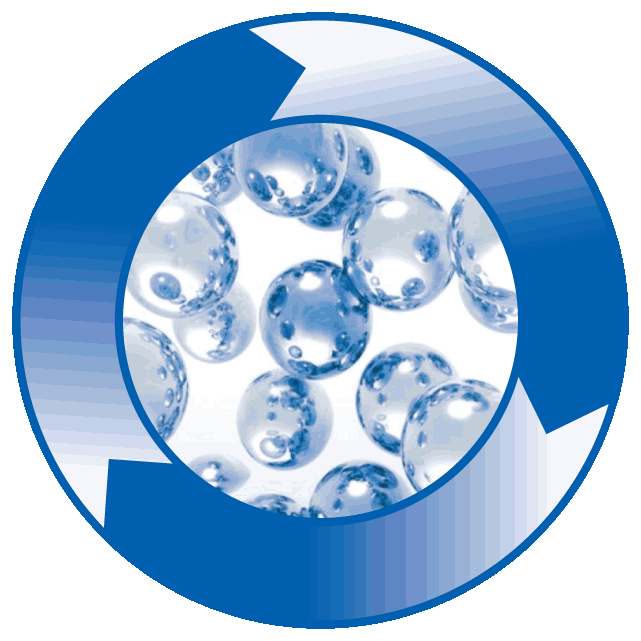OZONE LAUNDRY SYSTEMS
A commercial laundry disinfectant system.
Environmental and Cost Savings
Reduce chemical, water, and energy costs thanks to the elimination of fabric softener, as well as cold water washes and shorter dry times. Return on investment varies from 6 to 18 months depending upon facility size and utility costs.

What Is Ozone?

Ozone Molecule
Ozone is a naturally occurring triatomic form of oxygen that is extremely reactive. It is a natural feature of the upper atmosphere, protecting us from harmful UV radiation. Ozone is naturally produced when oxygen is exposed to high voltage electricity and when oxygen is impacted by certain ultralow wavelengths of UV radiation. Because of ozone's extra electron, it is unstable and extremely reactive. The products of the reaction are hydrogen peroxide and oxygen. This accounts for its superior disinfecting power. Ozone affects the DNA of bacteria, viruses, and parasites to halt reproduction.
Ozone Laundry Technology
Commercial laundry facilities such as those in healthcare, hospitality, and correctional settings will benefit from an ozone laundry system. A controlled amount of ozone is introduced into a wash system during filling and throughout the wash cycle. Ozone is effective against Escherichia coli, Streptococcus faecalis, Mycobacteriium tuberculosis, various yeast and fungus spores, and MRSA virus. Some facilities may be eligible for state rebates and credits in the USGBC's LEED program.
How Does an Ozone Laundry System Work?
The system is managed by a programmable logic controller (PLC) which is designed to provide multiple washers with the correct amount of disinfecting ozone at the proper times. An ozone generator produces a high voltage arc, essentially creating synthetic lightning. When dried oxygen is passed through the arc, a portion is converted into ozone. The ozone is injected into the washing machine via sparging rod during the filling step and throughout the wash cycle for optimal disinfection.

Sparging Rod

Treatment
-
SUDS: Alkali (soap) added to cold water causes textile fibers to swell. Bonds between soils and fibers break and soil is oxidized. The pH is raised to a slightly lower level than conventional wash process. Less water is needed to rinse out residual alkali as a result of the fibers swelling.
-
BLEACH: Stains are oxidized by bleaching agents and ozone. Bleach is eventually neutralized, leaving no residual in linens, minimizing linen damage often caused by residual chemicals.
-
SOUR: Used to adjust pH to a proper level. Allows ozone to continue the cleansing process.
-
SOFTENER: Fabric softeners are no longer needed because the alkali and acid do not create salt crystals. Better extract, shorter drying times and more absorbent linens.
Installation
Our trained technicians will insert a sparging rod into the washer's steam or temperature port and connect signal wires to the washer controller. Installation of a commercial ozone laundry system can typically be completed between unloading and loading of the washer with no disruption to laundry operations. No plumbing changes are needed and limited floor space is required. Normally, the site only provides a dedicated 115 Volt 20 Amp connection. Our technicians will provide laundry operators with training and troubleshooting tips during the installation of your commercial ozone laundry system.
